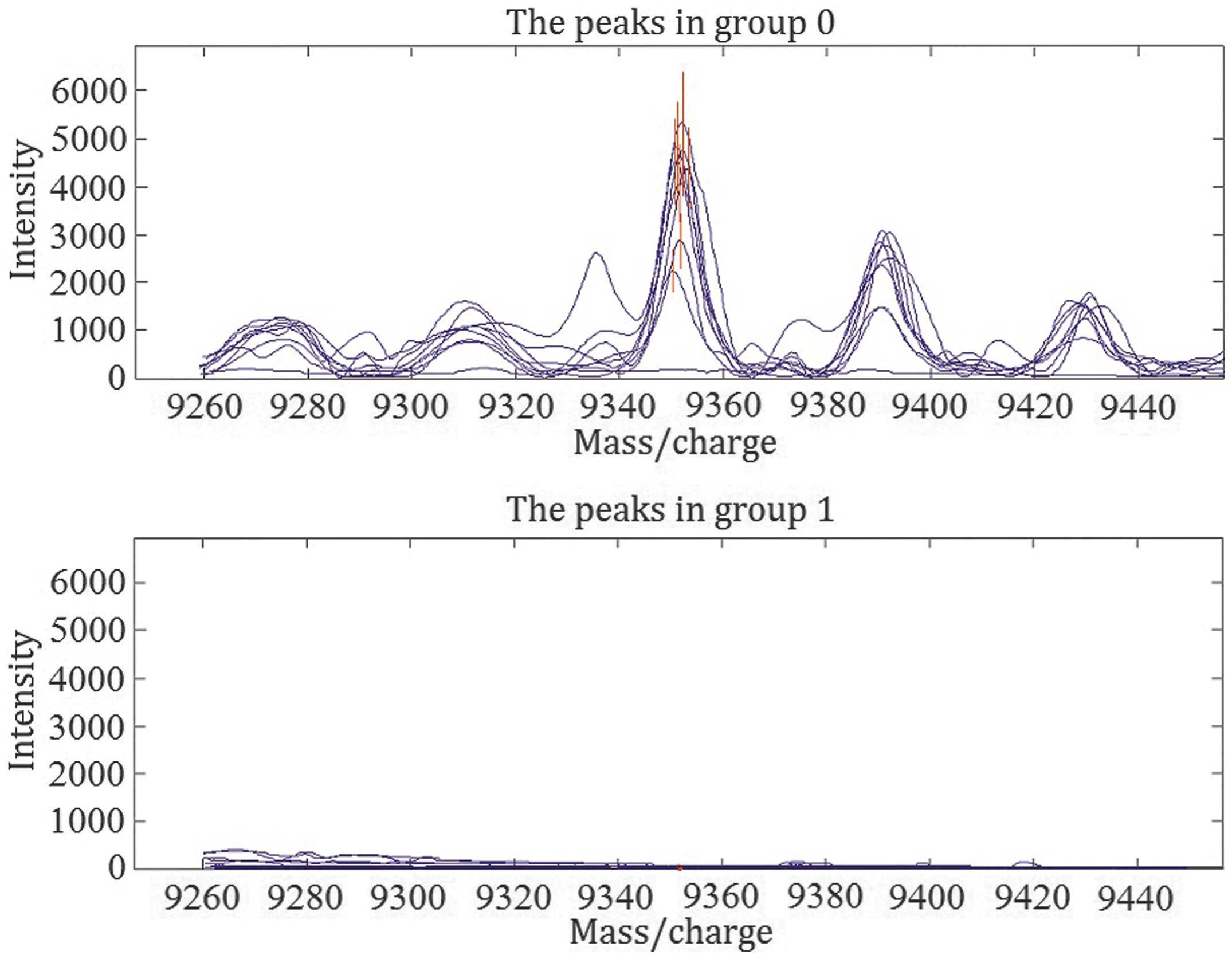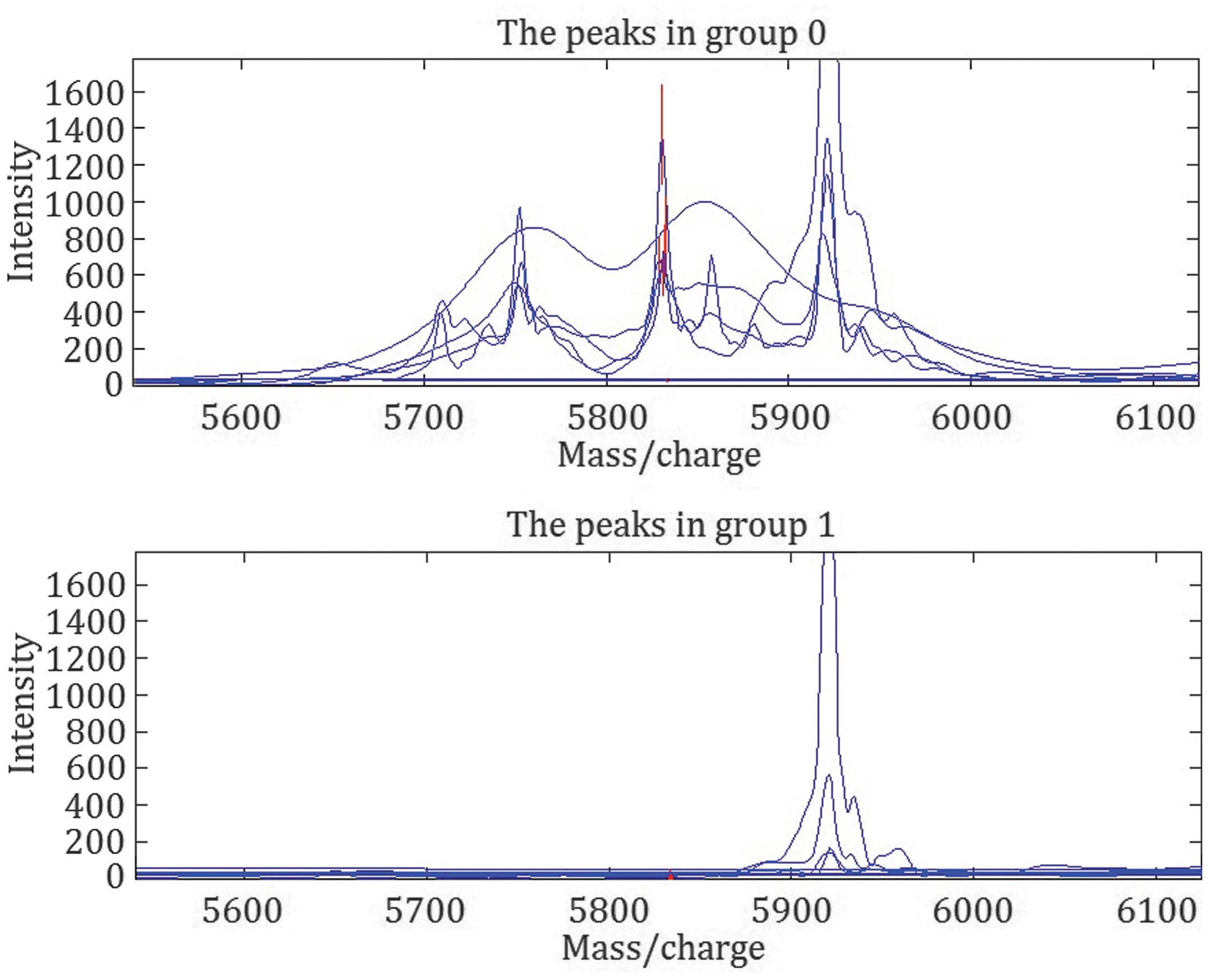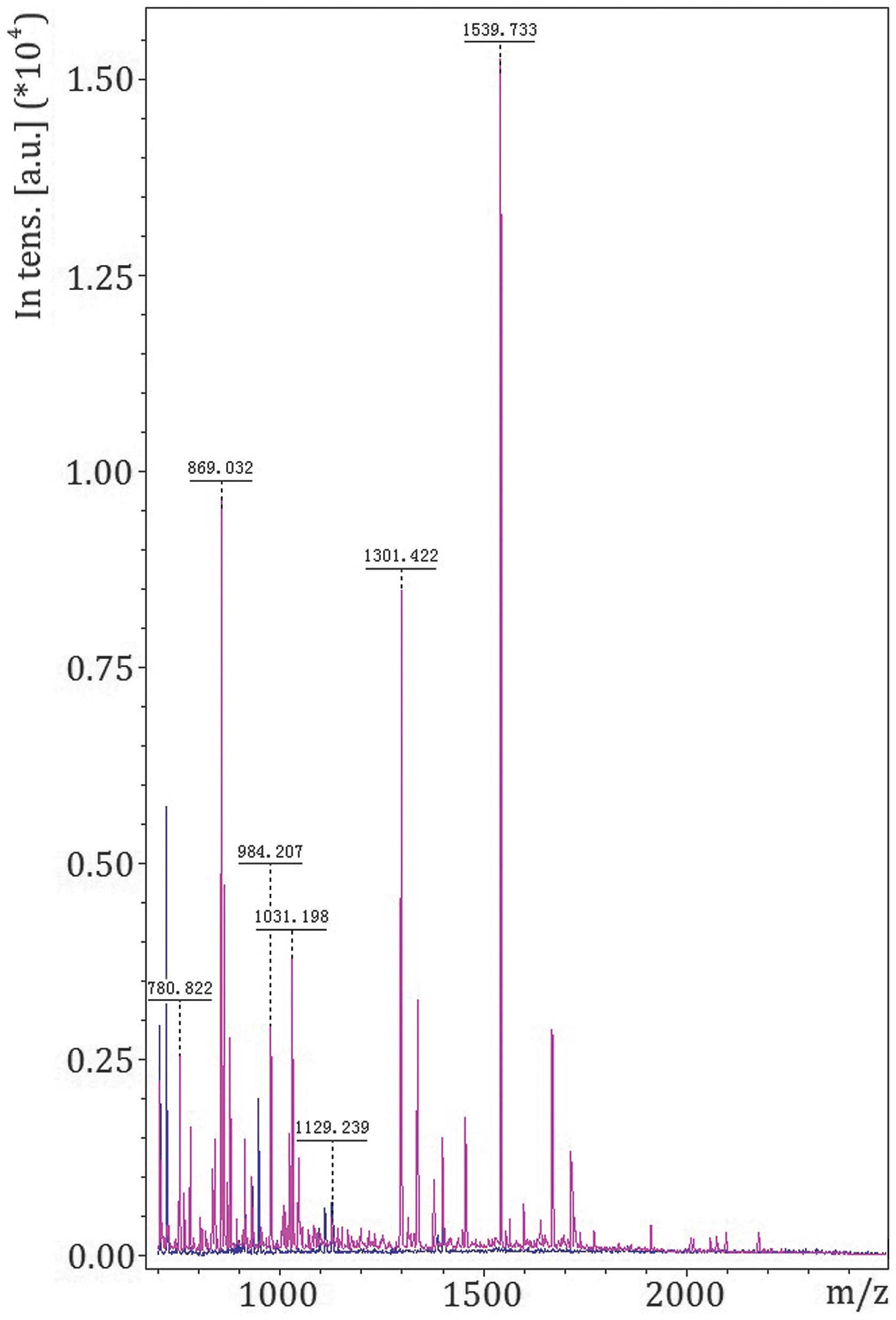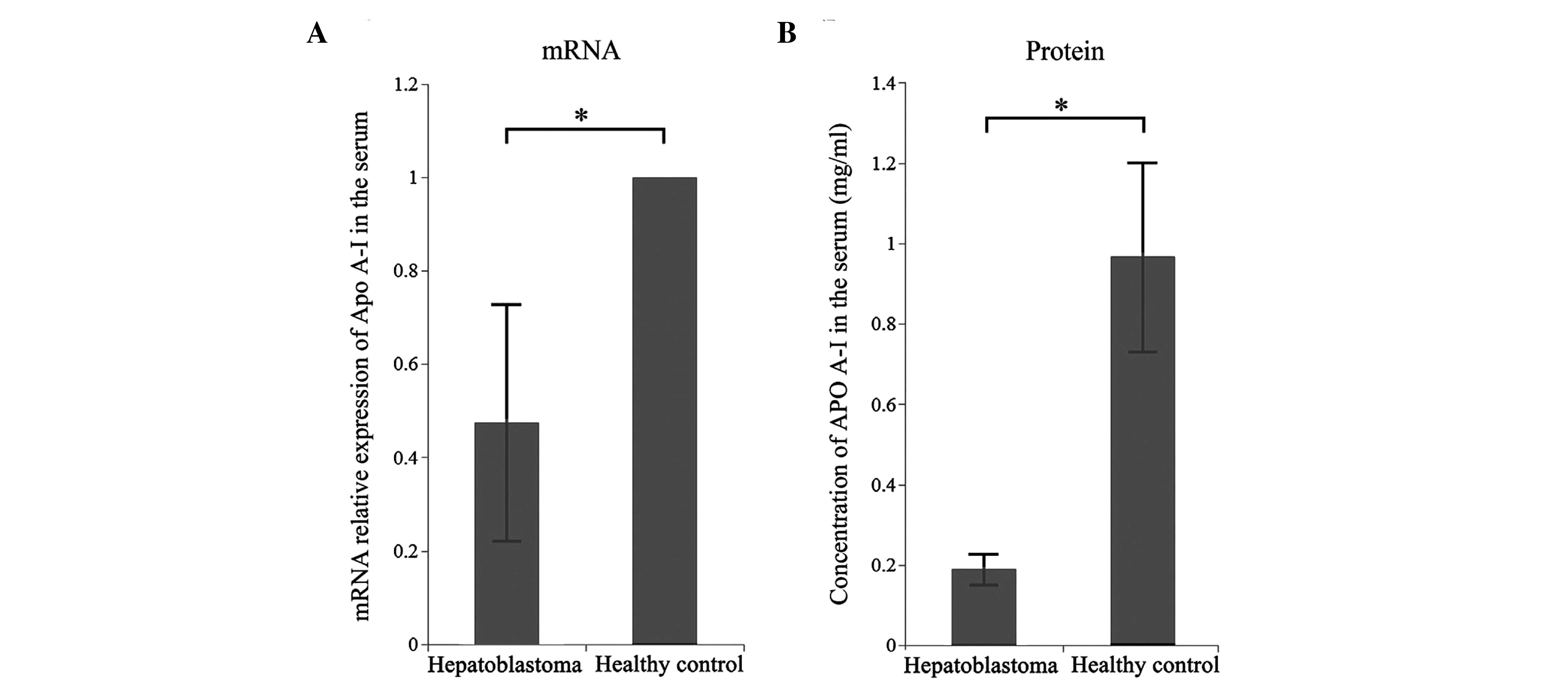|
1
|
Zynger DL, Gupta A, Luan C, Chou PM, Yang
GY and Yang XJ: Expression of glypican 3 in hepatoblastoma: an
immunohistochemical study of 65 cases. Hum Pathol. 39:224–230.
2008. View Article : Google Scholar : PubMed/NCBI
|
|
2
|
Ismail H, Broniszczak D, Kaliciński P,
Dembowska-Bagińska B, Perek D, Teisseyre J, Kluge P, Kościesza A,
Lembas A and Markiewicz M: Changing treatment and outcome of
children with hepatoblastoma: analysis of a single center
experience over the last 20 years. J Pediatr Surg. 47:1331–1339.
2012. View Article : Google Scholar : PubMed/NCBI
|
|
3
|
Baertschiger RM, Ozsahin H, Rougemont AL,
et al: Cure of multifocal panhepatic hepatoblastoma: is liver
transplantation always necessary? J Pediatr Surg. 45:1030–1036.
2010. View Article : Google Scholar : PubMed/NCBI
|
|
4
|
Pan FS, Xu M, Wang W, Zhou LY and Xie XY:
Infantile hepatic hemangioendothelioma in comparison with
hepatoblastoma in children: clinical and ultrasound features. Hepat
Mon. 13:e111032013. View Article : Google Scholar : PubMed/NCBI
|
|
5
|
Alvarez-Chaver P, Otero-Estévez O, Páez de
la Cadena M, Rodríguez-Berrocal FJ and Martínez-Zorzano VS:
Proteomics for discovery of candidate colorectal cancer biomarkers.
World J Gastroenterol. 20:3804–3824. 2014. View Article : Google Scholar : PubMed/NCBI
|
|
6
|
Silberring J and Ciborowski P: Biomarker
discovery and clinical proteomics. Trends Analyt Chem. 29:128–140.
2010. View Article : Google Scholar : PubMed/NCBI
|
|
7
|
Maurya P, Meleady P, Dowling P and Clynes
M: Proteomic approaches for serum biomarker discovery in cancer.
Anticancer Res. 27((3A)): 1247–1255. 2007.PubMed/NCBI
|
|
8
|
de Wit M, Fijneman RJ, Verheul HM, Meijer
GA and Jimenez CR: Proteomics in colorectal cancer translational
research: biomarker discovery for clinical applications. Clin
Biochem. 46:466–479. 2013. View Article : Google Scholar : PubMed/NCBI
|
|
9
|
Humphries JM, Penno MA, Weiland F, et al:
Identification and validation of novel candidate protein biomarkers
for the detection of human gastric cancer. Biochim Biophys Acta.
1844:1051–1058. 2014. View Article : Google Scholar : PubMed/NCBI
|
|
10
|
Zhang Q, Wang J, Dong R, Yang S and Zheng
S: Identification of novel serum biomarkers in child nephroblastoma
using proteomics technology. Mol Biol Rep. 38:631–638. 2011.
View Article : Google Scholar : PubMed/NCBI
|
|
11
|
Zhang Q, Shan Y, Wang JX, Dong R, Yang SB
and Zheng S: Detection of biomarkers in children with Wilms' tumor
using proteinchip technology. Chin Med J (Engl). 123:1939–1941.
2010.PubMed/NCBI
|
|
12
|
Wang J, Wang L, Zhang D, Fan Y, Jia Z, Qin
P, Yu J, Zheng S and Yang F: Identification of potential serum
biomarkers for Wilms tumor after excluding confounding effects of
common systemic inflammatory factors. Mol Biol Rep. 39:5095–5104.
2012. View Article : Google Scholar : PubMed/NCBI
|
|
13
|
Wang J, Zhang X, Ge X, Guo H, Xiong G and
Zhu Y: Proteomic studies of early-stage and advanced ovarian cancer
patients. Gynecol Oncol. 111:111–119. 2008. View Article : Google Scholar : PubMed/NCBI
|
|
14
|
Skytt A, Thysell E, Stattin P, Stenman UH,
Antti H and Wikström P: SELDI-TOF MS versus prostate specific
antigen analysis of prospective plasma samples in a nested
case-control study of prostate cancer. Int J Cancer. 121:615–620.
2007. View Article : Google Scholar : PubMed/NCBI
|
|
15
|
Liu D, Cao L, Yu J, Que R, Jiang W, Zhou Y
and Zhu L: Diagnosis of pancreatic adenocarcinoma using protein
chip technology. Pancreatology. 9:127–135. 2009. View Article : Google Scholar : PubMed/NCBI
|
|
16
|
Hundt S, Haug U and Brenner H: Blood
markers for early detection of colorectal cancer: a systematic
review. Cancer Epidemiol Biomarkers Prev. 16:1935–1953. 2007.
View Article : Google Scholar : PubMed/NCBI
|
|
17
|
Gonçalves A, Bertucci F, Birnbaum D and
Borg JP: Protein profiling SELDI-TOF and breast cancer: clinical
potential applications. Med Sci (Paris). 23:23–26. 2007.(In
French). View Article : Google Scholar : PubMed/NCBI
|
|
18
|
Kelly-Spratt KS, Pitteri SJ, Gurley KE, et
al: Plasma proteome profiles associated with inflammation,
angiogenesis, and cancer. PLoS One. 6:e197212011. View Article : Google Scholar : PubMed/NCBI
|
|
19
|
Fan Y, Shi L, Liu Q, et al: Discovery and
identification of potential biomarkers of papillary thyroid
carcinoma. Mol Cancer. 8:792009. View Article : Google Scholar : PubMed/NCBI
|
|
20
|
Xu T, Wang J and Fang Y: A model-free
estimation for the covariate-adjusted Youden index and its
associated cut-point. Stat Med. 33:4963–4974. 2014. View Article : Google Scholar : PubMed/NCBI
|
|
21
|
Chechlinska M, Kowalewska M and Nowak R:
Systemic inflammation as a confounding factor in cancer biomarker
discovery and validation. Nat Rev Cancer. 10:2–3. 2010. View Article : Google Scholar : PubMed/NCBI
|
|
22
|
Hou JM, Zhao X, Tian L, et al:
Immunotherapy of tumors with recombinant adenovirus encoding
macrophage inflammatory protein 3beta induces tumor-specific immune
response in immunocompetent tumor-bearing mice. Acta Pharmacol Sin.
30:355–363. 2009. View Article : Google Scholar : PubMed/NCBI
|
|
23
|
Kondo T, Ito F, Nakazawa H, Horita S,
Osaka Y and Toma H: High expression of chemokine gene as a
favorable prognostic factor in renal cell carcinoma. J Urol.
171:2171–2175. 2004. View Article : Google Scholar : PubMed/NCBI
|
|
24
|
van Grevenstein WM, Hofland LJ, van Rossen
ME, van Koetsveld PM, Jeekel J and van Eijck CH: Inflammatory
cytokines stimulate the adhesion of colon carcinoma cells to
mesothelial monolayers. Dig Dis Sci. 52:2775–2783. 2007. View Article : Google Scholar : PubMed/NCBI
|
|
25
|
Jablonska E, Piotrowski L and Grabowska Z:
Serum Levels of IL-1β, IL-6, TNF-α, sTNF-RI and CRP in Patients
with Oral Cavity Cancer. Pathol Oncol Res. 3:126–129. 1997.
View Article : Google Scholar : PubMed/NCBI
|
|
26
|
Law SW, Lackner KJ, Fojo SS, Hospattankar
A, Monge JC and Brewer HB Jr: The molecular biology of human
apoA-I, apoA-II, apoC-II and apoB. Adv Exp Med Biol. 201:151–162.
1986.PubMed/NCBI
|
|
27
|
Frank PG and Marcel YL: Apolipoprotein
A-I: Structure-function relationships. J Lipid Res. 41:853–872.
2000.PubMed/NCBI
|
|
28
|
Ma YQ, Thomas GN and Tomlinson B:
Association of two apolipoprotein A-I gene MspI polymorphisms with
lipid and blood pressure levels. Int J Cardiol. 102:309–314. 2005.
View Article : Google Scholar : PubMed/NCBI
|
|
29
|
Du T, Yuan G, Zhang M, Zhou X, Sun X and
Yu X: Clinical usefulness of lipid ratios, visceral adiposity
indicators, and the triglycerides and glucose index as risk markers
of insulin resistance. Cardiovasc Diabetol. 13:1462014. View Article : Google Scholar : PubMed/NCBI
|
|
30
|
Su F, Lang J, Kumar A, et al: Validation
of candidate serum ovarian cancer biomarkers for early detection.
Biomark Insights. 2:369–375. 2007.PubMed/NCBI
|
|
31
|
Getz GS, Wool GD and Reardon CA:
Apoprotein A-I mimetic peptides and their potential
anti-atherogenic mechanisms of action. Curr Opin Lipidol.
20:171–175. 2009. View Article : Google Scholar : PubMed/NCBI
|
|
32
|
Gao F, Chattopadhyay A, Navab M, et al:
Apolipoprotein A-I mimetic peptides inhibit expression and activity
of hypoxia-inducible factor-1α in human ovarian cancer cell lines
and a mouse ovarian cancer model. J Pharmacol Exp Ther.
342:255–262. 2012. View Article : Google Scholar : PubMed/NCBI
|


















